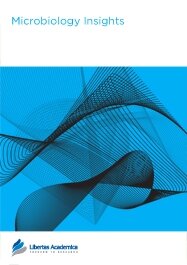

Publication Date: 14 Apr 2013
Type: Review
Journal: Microbiology Insights
Citation: Microbiology Insights 2013:6 29-36
doi: 10.4137/MBI.S10792

The use of antibiotics is unavoidable in trying to treat acute infections and in the prevention and control of chronic infections. Over the years, an ever increasing number of infections has escalated the use of antibiotics, which has necessitated action against an emerging bacterial resistance. There seems to be a continuous acquisition of new resistance mechanisms among bacteria that switch niches between human, animals, and the environment. An antibiotic resistant strain emerges when it acquires the DNA that confers the added capacity needed to survive in an unusual niche. Once acquired, a new resistance mechanism evolves according to the dynamics of the microenvironment; there is then a high probability that it is transferred to other species or to an avirulent strain of the same species. A well understood model for studying emerging antibiotic resistance and its impact is Pseudomonas aeruginosa, an opportunistic pathogen which is able to cause acute and chronic infections in nosocomial settings. This bacterium has a huge genetic repertoire consisting of genes that encode both innate and acquired antibiotic resistance traits. Besides acute infections, chronic colonization of P. aeruginosa in the lungs of cystic fibrosis (CF) patients plays a significant role in morbidity and mortality. Antibiotics used in the treatment of such infections has increased the longevity of patients over the last several decades. However, emerging multidrug resistant strains and the eventual increase in the dosage of antibiotic(s) is of major concern. Though there are various infections that are treated by single/combined antibiotics, the particular case of P. aeruginosa infection in CF patients serves as a reference for understanding the impact of overuse of antibiotics and emerging antibiotic resistant strains. This mini review presents the need for judicious use of antibiotics to treat various types of infections, protecting patients and the environment, as well as achieving a better treatment outcome.
PDF (837.12 KB PDF FORMAT)
RIS citation (ENDNOTE, REFERENCE MANAGER, PROCITE, REFWORKS)
BibTex citation (BIBDESK, LATEX)
XML
PMC HTML

We made our first submission to Microbiology Insights. We are very impressed by the helpful guidance during paper submission, the prompt processing (less than two weeks to editorial decision), and the flexibility of the editor-in-chief. We believe that Microbiology Insights journal is a unique platform that offer a high visibility for microbiologists, particularly in resource-poor settings.
Facebook Google+ Twitter
Pinterest Tumblr YouTube